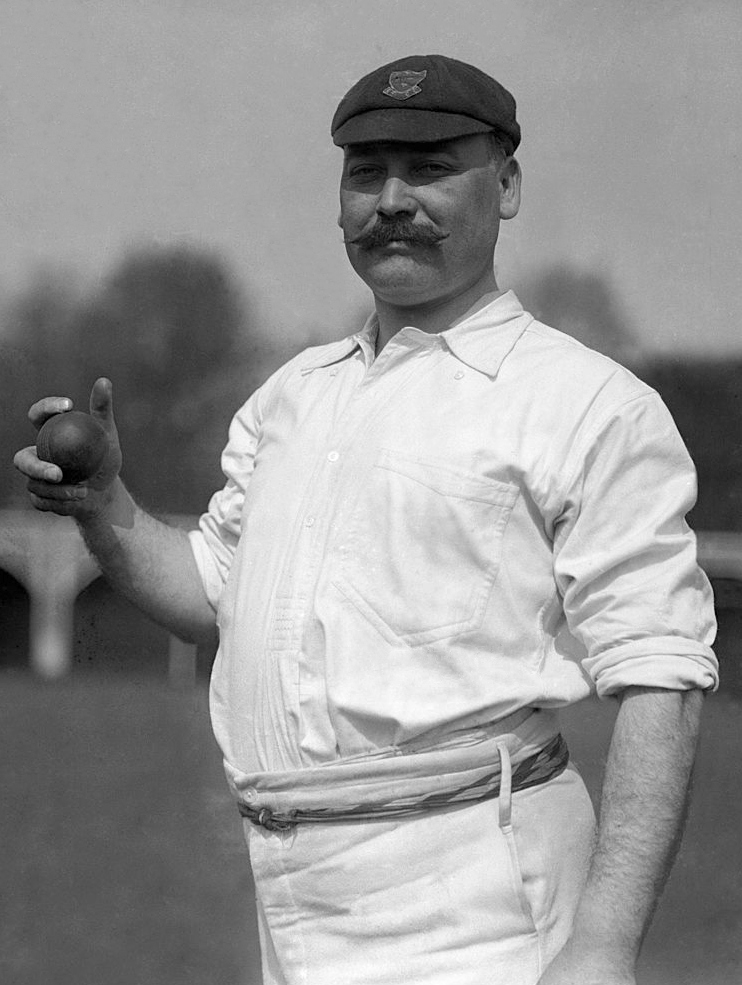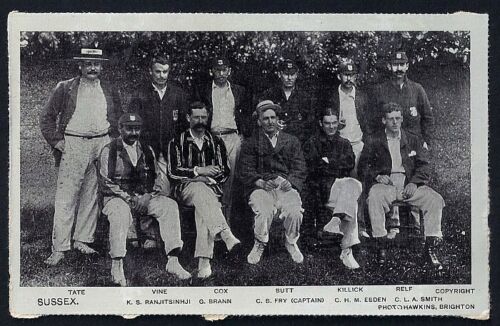I’ve got a little kid at home who’ll make it up to me
In the folklore of Sussex cricket, Fred Tate is remembered chiefly for two related events – in his one and only Test match, against Australia and with the Ashes on the line, he dropped a catch in the outfield that would have won England the match, but instead contributed to their defeat and the loss of the urn. Speaking afterwards to his friend Len Braund, who had bowled the ball in question, Tate is reported to have said “I’ve got a little kid at home there who’ll make up for it to me”; the boy in question, Maurice Tate, would prove to be one of Sussex’s greatest players, perhaps the club’s finest ever, and so his father was vindicated. To focus Fred Tate’s legacy on his great failure and his progeny nonetheless does him a disservice, as a man who played for Sussex for eighteen seasons

from 1887 to 1905, claiming 1306 wickets at 21.48 apiece, including multiple seasons taking more than one-hundred wickets with a personal record of 161 at 14.92 in 1902, deserves to be celebrated as one of Sussex’s great Golden Age bowlers in his own right.
Tate, nicknamed ‘Chub’ or ‘Chubby’ by his peers, was one of the first in a line of great Sussex spin bowlers who could be relied on to hold down one end of the wicket for hours at a time, keeping the pressure on and economy low while his quicker teammates did their work. Bowling long spells without loss of accuracy or fatigue, Tate was able to strangle the firepower out of even the finest batters that this era could offer. With the likes of W.G.Grace, Gilbert Jessop and Arthur Shrewsbury to bowl to, a reputation as an economic bowler in this era is particularly respectable. His earliest standout performance came in 1888 against Kent: with the opposition at 41 for 4 and requiring four more runs to win, Tate claimed five wickets for a single run in four overs, leaving his opposition suddenly perilously close to ignominious defeat. Though Kent won the match, Tate’s capacity to draw a possible victory out of a hopeless scenario earned him plaudits, and set a standard of excellence in bowling that he maintained throughout his time at Sussex.

A Golden Age
The Golden Age of cricket in which Tate played was also of course the Golden Age of Sussex in particular, and Tate was one of many fine players who made up this period – the famous batting duo of C.B.Fry and K.S.Ranjitsinhji, all-rounder Joseph Vine, as well as bowling talents like Cyril Bland, with whom Tate formed a formidable bowling pair after Bland’s debut in 1898, and Charles Aubrey Smith, the great fast bowler who would go on to become a film star and founder of the Hollywood Cricket Club. In spite of this crop of exemplary talent, the squad could never quite manage to win a County Championship, but certainly played some of the most exciting cricket the country had ever seen. Tate, as a stalwart lynchpin of the bowling attack, was one of the anchors of that side, helping keep it steady throughout his long career. His popularity at the club must have been noteworthy, as his 1901 benefit – a game dedicated to a specific player, who claims the gate receipts as a supplement to his annual income – amounted to £1,051 18s, a huge sum of money for a cricketer at that time and an all-time Sussex record.
Tate’s contributions to Sussex were extensive and humble, far beyond simply gifting the club one of its greatest players. The Tates as a pair represent a huge part of Sussex’s history from the Golden Age to the period before the Second World War – while the Tate Gates were dedicated in honour of Maurice Tate, perhaps we can consider them an implicit show of respect to his father, for all his long years of service to the club.
By Simon Edwards, September 2023